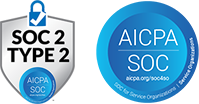What Is Ageism?
Ageism is prejudice or discrimination directed at individuals because of their age. It can manifest as stereotypes—assuming older workers resist change or younger staff lack judgment—and as policies or practices that exclude, marginalize, or undervalue people based solely on age. In the U.S., the Age Discrimination in Employment Act (ADEA) protects employees age forty and above from unfair treatment.
Why Ageism Matters
Unchecked ageism undermines morale, erodes trust, and drives talent away. Organizations that sideline experienced staff lose institutional knowledge, while discounting younger workers stifles fresh perspectives. Beyond human impact, age-based bias exposes employers to legal risk under the ADEA and conflicts with broader diversity, equity, and inclusion goals—damaging reputation and hindering innovation.
Where Ageism Is Used
- Recruiting: Phrases like “digital native” or “recent graduate” can deter older applicants.
- Onboarding & Training: Older hires may be skipped for new-technology workshops; younger staff may be passed over for leadership development.
- Performance Reviews: Feedback tainted by age-based assumptions skews ratings and career paths.
- Promotion & Succession Planning: Leadership roles often default to younger profiles or vice versa.
- Workplace Culture: Informal comments or “jokes” about age create hostile environments and diminish engagement.
Ageism Key Benefits of Prevention
- Maximized Talent Utilization: Tapping both seasoned expertise and fresh insights elevates performance.
- Higher Retention: Fair treatment across ages reduces turnover and associated costs.
- Stronger Culture: Intergenerational collaboration fosters mentorship, innovation, and knowledge transfer.
- Legal Compliance: Proactively addressing bias avoids costly ADEA litigation and reputational damage.
- Enhanced Employer Brand: A reputation for inclusivity attracts a broader, more diverse candidate pool.
Best Practices & Examples
- Bias-Free Job Descriptions: Remove age-loaded terms; focus on competencies and outcomes.
- Structured Interviews: Use standardized questions and scoring rubrics to minimize subjective judgments.
- Anonymous Screening: Redact graduation dates or birth years to focus solely on skills and experience.
- Intergenerational Mentorship: Pair employees across age groups to promote knowledge sharing and break down stereotypes.
- Regular Climate Surveys: Solicit anonymous feedback on age inclusion, analyze results by cohort, and address identified gaps.
Conclusion
Addressing ageism transforms compliance into strategic advantage. By embedding age-neutral policies, structured processes, and continuous feedback loops, organizations unlock the potential of every generation. A truly intergenerational workplace advances innovation, deepens engagement, and lays the foundation for sustainable growth.
Ageism FAQs
Q: What is an example of ageism?
Excluding experienced candidates by specifying “recent graduates only” in a job posting is ageism, as it unfairly blocks qualified individuals based solely on age.
Q: What are the three types of ageism?
1. Institutional: Policies or laws disadvantaging certain age groups.
2. Interpersonal: Stereotypes or biased remarks in daily interactions.
3. Self-directed: Internalized negative beliefs about one’s own age.
Q: What is the definition of ageism?
Ageism is discrimination or stereotyping based on age, resulting in exclusion or unfair treatment of individuals perceived as “too young” or “too old.”
Q: How do we stop ageism?
Implement bias-awareness training, enforce structured and anonymous screening processes, promote intergenerational mentorship, and monitor age-diversity metrics to ensure accountability.
Q: Ageism examples?
Examples include bypassing older employees for tech training, labeling younger staff as “inexperienced,” or making policies that favor one age group over another.
Q: Ageism in the workplace?
Ageism in the workplace shows up as exclusion from projects, mockery in break rooms, or informal rules—like “only young people can work late”—that marginalize certain age groups.
Q: Ageism pronunciation?
Ageism is pronounced “AY-juh-iz-um,” with the emphasis on the first syllable.
Q: Ageism in healthcare?
In healthcare, ageism can lead providers to dismiss older patients’ concerns as “just old age” or to overlook younger patients’ pain, resulting in inadequate care.
Q: Ageism in psychology?
Psychology recognizes ageism as a social bias affecting mental health; negative stereotypes can lead to self-fulfilling prophecies and poorer well-being among targeted age groups.
Q: Types of ageism?
See “three types” above—Institutional, Interpersonal, and Self-directed.
Q: Causes of ageism?
Causes include cultural stereotypes, fear of aging, lack of intergenerational contact, and organizational pressures that value novelty over experience.
Q: Ageism Reddit?
On Reddit, ageism discussions often appear in r/antiwork and r/insomnia where users share experiences of age-based bias in hiring or daily interactions.



